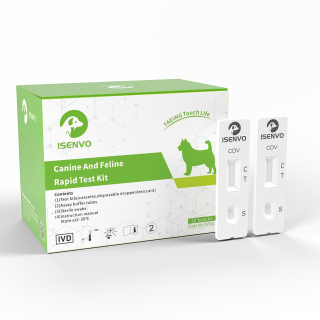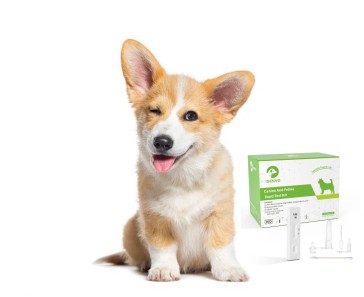Canine distemper is a serious viral disease that affects dogs around the world. It can cause a wide range of health problems, from respiratory and digestive issues to life-threatening neurological complications. The virus spreads easily and quickly—especially in places where dogs are in close contact, such as shelters, parks, and kennels.
In this article, we’ll take a closer look at what canine distemper is, how it spreads, signs to watch for, and why early detection is so important. We’ll also introduce a convenient at-home testing option to help dog owners monitor their pet’s health and catch infections early.
What Is Canine Distemper?
Canine distemper is caused by a highly contagious virus that affects a dog’s respiratory, gastrointestinal, and nervous systems. It is most dangerous to puppies and unvaccinated dogs, but any dog can be at risk if exposed to the virus.
The virus is often spread through airborne droplets from coughing or sneezing, or by contact with infected body fluids like saliva, urine, or eye discharge. Once a dog is infected, the virus can cause serious illness, and in severe cases, it can be fatal.
How Does It Spread?
Distemper spreads through:
Airborne particles from sneezing and coughing
Direct contact with infected dogs or their bodily fluids
Contaminated surfaces, like bowls, toys, or bedding
People who unknowingly carry the virus on their hands or clothing
Since the virus can survive in the environment for a short time, even brief exposure can be enough for transmission, especially in crowded or poorly sanitized areas.
Signs and Symptoms of Distemper
Canine distemper affects multiple parts of the body, so symptoms may vary and change over time. Common signs include:
Fever and lethargy
Coughing or nasal discharge
Vomiting and diarrhea
Eye inflammation or discharge
Loss of appetite
Twitching, seizures, or other neurological issues
Some dogs show only mild symptoms at first, but the disease can progress quickly. That’s why early detection is so important.
Why Early Detection Matters
Catching canine distemper early gives your dog the best chance at recovery and helps stop the virus from spreading to others. Here’s why early detection is critical:
Prevents serious complications like brain damage or long-term disability
Reduces risk of dehydration from vomiting or diarrhea
Helps protect other dogs in the household or community
Allows faster treatment, giving your vet more options to manage symptoms
Distemper can be difficult to diagnose based on symptoms alone, so a reliable test is an important tool for early action.
A Simple Way to Detect Distemper Early
The TAEING CDV Rapid Test Kit offers a quick and convenient way to test your dog for canine distemper at home or in a veterinary setting. Designed to detect the presence of the virus in a dog’s eye or nasal secretions, the test delivers results in just a few minutes.
Whether you're concerned about new symptoms or checking a newly adopted dog, this test provides peace of mind when time matters most.
What to Do If Your Dog Tests Positive
If your dog tests positive for distemper:
Contact your veterinarian right away for confirmation and treatment.
Isolate your dog to avoid spreading the virus to other animals.
Follow your vet’s instructions, which may include hydration support, medications, and rest.
Keep the environment clean, and disinfect bowls, bedding, and surfaces regularly.
There is no specific cure for distemper, but with early support and proper care, some dogs can recover—especially if the infection is caught early.
Final Thoughts
Canine distemper is a dangerous but preventable disease. Vaccination is the best defense, but knowing how to spot the signs and act quickly is also essential.
The TAEING CDV Rapid Test Kit gives dog owners an easy, fast way to detect infection and take action early. By staying informed and prepared, you can help your dog stay healthy—and stop the virus in its tracks.
A healthier dog starts with early detection.










